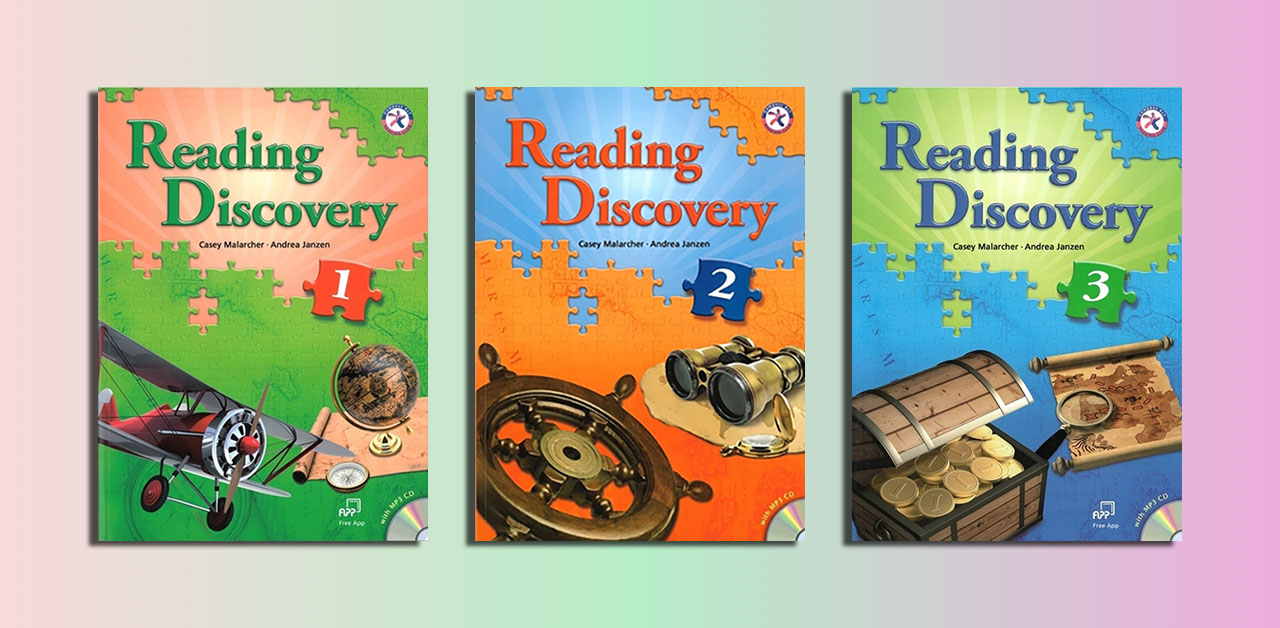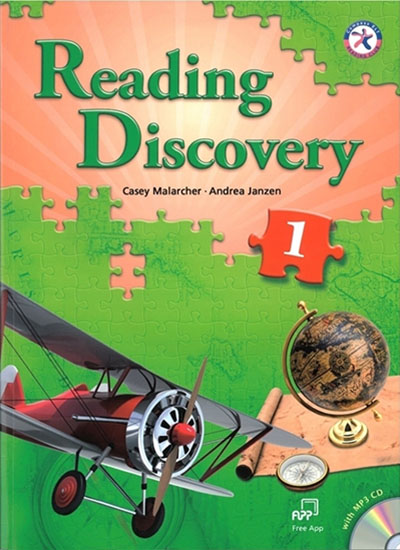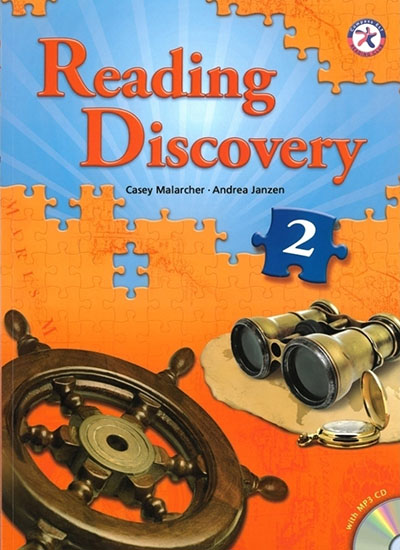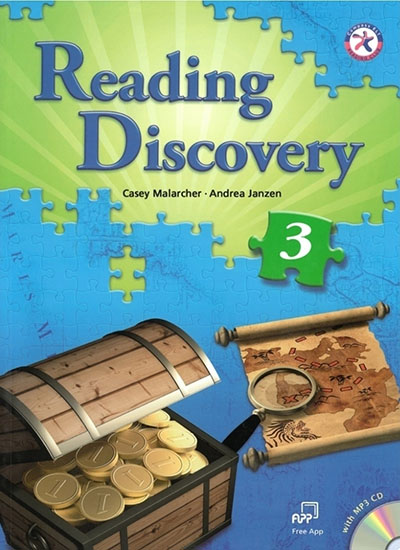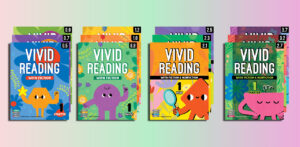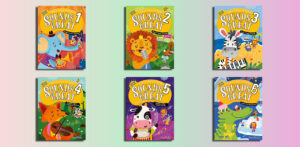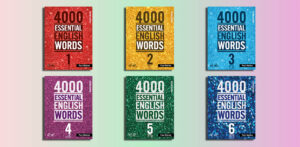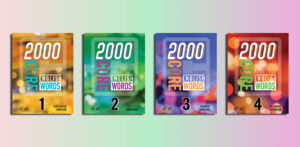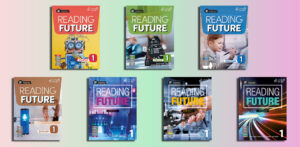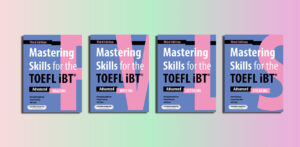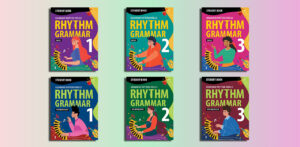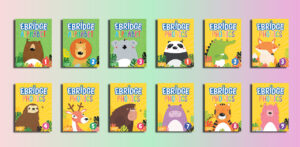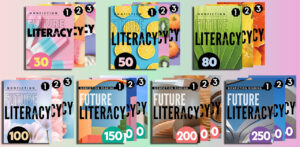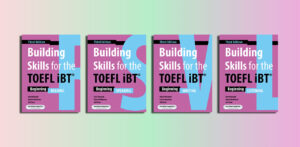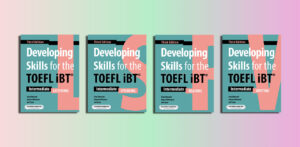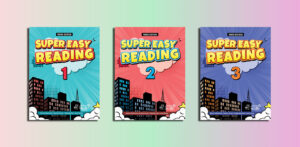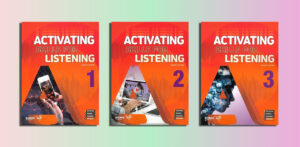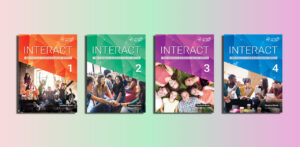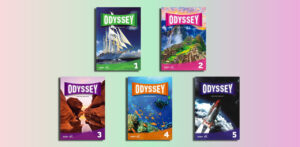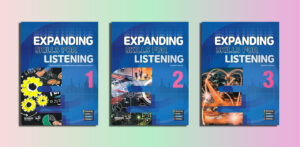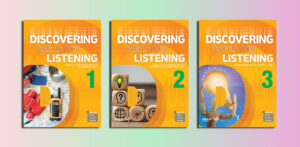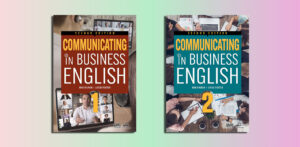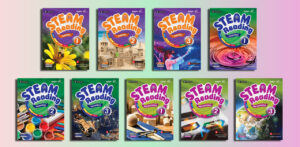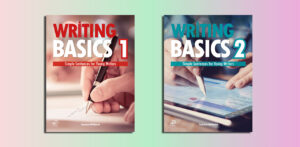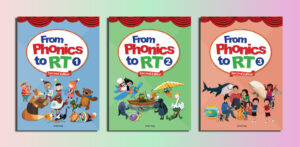Reading Discovery (PDFs, Resources)
Level 1 (A2+)
Answer Key – Audio – Final Test – Midterm Test – Review Test – Student Book – Transcripts – Translations – Word List – Word Test – Writing Worksheets
Reading Discovery 1 Student Book.pdf – Sample: Click
Level 2 (A2+ / B1)
Answer Key – Audio – Final Test – Midterm Test – Review Test – Student Book – Transcripts – Translations – Word List – Word Test – Writing Worksheets
Reading Discovery 2 Student Book.pdf – Sample: Click
Level 3 (B1)
Answer Key – Audio – Final Test – Midterm Test – Review Test – Student Book – Transcripts – Translations – Word List – Word Test – Writing Worksheets
Reading Discovery 3 Student Book.pdf – Sample: Click
| Name | Price | Buy |
|---|---|---|
| Reading Discovery 1 (PDFs, Resources) | $5 | |
| Reading Discovery 2 (PDFs, Resources) | $5 | |
| Reading Discovery 3 (PDFs, Resources) | $5 | |
| Reading Discovery - All 3 Levels (PDFs, Resources) | $12 |
Overview of the “Reading Discovery” by Compass Publishing
Contents
| ✅ Coursebook: | Reading Discovery |
| ✅ Authors: | Casey Malarcher, Andrea Janzen |
| ✅ Publisher: | Compass Publishing |
| ✅ English type: | International English |
| ✅ Levels: | A2+, B1, B1+ |
| ✅ Skill: | Reading |
| ✅ For: | Secondary |
| ✅ Publication year: | 2011 |
“Reading Discovery” is a three-level reading textbook series by Compass Publishing, designed for middle school students with pre-intermediate to intermediate English language proficiency. Presented in full color, this series integrates reading, speaking, listening, and writing skills, making it a comprehensive tool for English language learners (ELLs). Aimed at fostering both academic and linguistic growth, it is suitable for teacher-guided classroom instruction or self-paced study at home. Below, we explore the key features, structure, and benefits of this engaging series.
Key Features
The “Reading Discovery” series is crafted to enhance language proficiency while encouraging critical thinking and academic preparedness. Its standout features include:
- Engaging Content: Each of the three levels contains twenty units with diverse, non-fiction reading passages covering topics from science and social studies to art and literature, designed to spark curiosity and maintain student interest.
- Full-Color Illustrations: Vibrant visuals support comprehension and make the learning experience more engaging, especially for younger learners.
- Vocabulary and Fluency Practice: Exercises focus on vocabulary retention and speaking activities to boost fluency, helping students build a robust lexicon and confidence in oral communication.
- Timed Reading Texts: Passages include word counts and are designed for timed reading to help students track and improve their reading speed and comprehension.
- Listening and Academic Skills: Supplemental audio recordings, available online, accompany listening comprehension exercises that reinforce content retention and prepare students for academic settings, including pre-TOEFL courses.
- Graphic Organizers: Included in each unit, these tools stimulate critical thinking by helping students visualize and organize information from the texts.
- Unit Reviews: Reviews incorporate phrases and idioms, reinforcing language retention and introducing students to practical expressions for everyday use.
Unit Structure
Each unit in the “Reading Discovery” series follows a structured format to maximize learning outcomes:
- Pre-Reading and Vocabulary Preview: Activities activate prior knowledge and introduce key vocabulary, setting the stage for the reading passage.
- Timed Reading Text: A measured passage with a word count encourages students to practice reading efficiently while maintaining comprehension.
- Reading Comprehension and Language Practice: Combined exercises test understanding and reinforce language skills through varied question types, such as general comprehension, inference, and detail-oriented tasks.
- Listening Comprehension: Exercises paired with audio materials enhance listening skills and connect to the unit’s theme, fostering integrated skill development.
- Graphic Organizers: These tools help students analyze and summarize content, promoting critical thinking and structural understanding of the text.
- Summarizing Activities: Tasks encourage students to synthesize information, improving both reading and writing proficiency.
- Vocabulary and Idiom Review: Each unit concludes with a review of key terms and idiomatic expressions, solidifying language acquisition.
Target Audience and Levels
The series is tailored for middle school students at the following CEFR levels:
- Reading Discovery 1: CEFR A2+, Flesch-Kincaid Level 4.98, suitable for pre-intermediate learners.
- Reading Discovery 2: CEFR A2+/B1, targeting learners transitioning from pre-intermediate to intermediate proficiency.
- Reading Discovery 3: CEFR B1, designed for intermediate learners.
Conclusion
The “Reading Discovery” series by Compass Publishing is a dynamic and versatile resource for middle school ELLs seeking to improve their English proficiency. Its blend of engaging content, structured units, and integrated skill-building activities makes it a valuable tool for both students and educators. Whether used in a classroom or for self-study, this series equips learners with the skills needed for academic success and confident communication.
Reading Discovery 1
Who is suitable for “Reading Discovery”?
The “Reading Discovery” series by Compass Publishing is suitable for:
Middle School Students: Designed specifically for learners in this age group, typically aged 11–15.
English Language Learners (ELLs): Aimed at students with pre-intermediate to intermediate English proficiency.
- Level 1: CEFR A2+, ideal for pre-intermediate learners.
- Level 2: CEFR A2+/B1, suitable for learners transitioning from pre-intermediate to intermediate.
- Level 3: CEFR B1, targeted at intermediate learners.
Classroom and Self-Study Learners: Appropriate for teacher-guided instruction in schools or independent study at home.
Students Preparing for Academic Settings: Those seeking to improve reading, writing, speaking, and listening skills, including preparation for exams like pre-TOEFL, due to its focus on academic skills and standardized test-style questions.
Learners Interested in Diverse Topics: Students who enjoy non-fiction content spanning science, social studies, art, and literature, presented with engaging visuals and activities to foster curiosity and critical thinking.
Reading Discovery 2
The benefits of “Reading Discovery”
The “Reading Discovery” series by Compass Publishing offers numerous benefits for middle school English language learners (ELLs) and educators:
For Students:
- Integrated Skill Development: Combines reading, writing, speaking, and listening exercises, fostering well-rounded language proficiency.
- Academic Preparation: Includes standardized test-style questions (e.g., inference, main idea, paraphrasing) to prepare students for exams like pre-TOEFL and academic settings.
- Improved Reading Fluency: Timed reading texts with word counts help students enhance reading speed and comprehension.
- Vocabulary Expansion: Targeted vocabulary exercises and idiom reviews build a robust lexicon and practical language use.
- Critical Thinking Skills: Graphic organizers and summarizing activities encourage analysis, synthesis, and organization of information.
- Engagement and Motivation: Full-color illustrations and diverse non-fiction topics (science, social studies, art, literature) spark curiosity and maintain interest.
- Confidence in Communication: Speaking and listening activities, supported by supplemental audio, boost fluency and oral communication skills.
For Educators:
- Structured Lesson Planning: Consistent unit structure (pre-reading, timed texts, comprehension, etc.) simplifies lesson preparation and delivery.
- Flexible Use: Suitable for classroom instruction or remote learning, accommodating various teaching environments.
- Effective Assessment Tools: Timed readings, comprehension questions, and unit reviews enable easy monitoring of student progress.
- Comprehensive Resources: Access to online vocabulary lists, audio recordings, and teacher’s sets supports dynamic lesson implementation.
- Adaptable for Diverse Levels: Three levels (CEFR A2+ to B1) cater to varying proficiency levels, making it versatile for mixed-ability classrooms.
Overall, “Reading Discovery” equips students with essential language and academic skills while providing educators with a versatile, engaging tool to facilitate effective English instruction.
Reading Discovery 3
Effective learning strategies for “Reading Discovery”
To maximize the benefits of the “Reading Discovery” series by Compass Publishing, students and educators can employ the following effective learning strategies tailored to its structure and features:
For Students:
Preview Vocabulary Actively:
- Before reading, review the unit’s vocabulary preview. Create flashcards or use the online vocabulary study lists provided by Compass Publishing to reinforce key terms.
- Practice using new words in sentences or short conversations to internalize meanings and improve retention.
Practice Timed Reading:
- Use the timed reading texts to track reading speed. Set a timer, note the word count, and calculate words per minute after each passage.
- Gradually aim to increase speed while maintaining comprehension by rereading passages and summarizing main ideas.
Engage with Graphic Organizers:
- Actively fill out graphic organizers to visualize relationships between ideas in the text. For example, create mind maps or charts to connect main ideas and supporting details.
- Use these tools to prepare for summarizing activities, reinforcing critical thinking and organization skills.
Leverage Audio Resources:
- Listen to the supplemental audio recordings multiple times to improve listening comprehension. First, listen for gist, then focus on specific details or unfamiliar words.
- Repeat after the audio to practice pronunciation and fluency, mimicking the speaker’s intonation and rhythm.
Summarize and Paraphrase:
- After completing a unit, write or orally summarize the passage in your own words to reinforce comprehension and writing skills.
- Practice paraphrasing key sentences to build confidence in expressing ideas differently, a key skill for academic tasks.
Review Idioms and Phrases:
- Regularly revisit the unit reviews to practice idioms and expressions. Incorporate them into daily conversations or journal entries to make them part of your active vocabulary.
- Create a personal idiom notebook to track and revisit these expressions over time.
Collaborate on Speaking Activities:
- Pair up with a classmate or study partner to practice speaking exercises. Discuss the reading passage, answer comprehension questions aloud, or role-play scenarios using new vocabulary.
- Record your discussions to self-assess pronunciation and fluency, identifying areas for improvement.
For Educators:
Scaffold Pre-Reading Activities:
- Begin each unit with brainstorming or discussion prompts related to the passage’s topic to activate students’ prior knowledge and build context.
- Introduce key vocabulary through interactive games (e.g., matching or charades) to make learning engaging and memorable.
Incorporate Group Work:
- Assign small groups to tackle comprehension questions or graphic organizers collaboratively, encouraging peer teaching and discussion.
- Use jigsaw activities where each group focuses on a different section of the passage, then shares findings with the class.
Differentiate Instruction:
- Tailor tasks to students’ proficiency levels. For example, provide sentence starters for A2+ learners in Level 1 or challenge B1 learners in Level 3 with open-ended questions.
- Offer extension activities, like writing a short essay or creating a poster, for advanced students to deepen engagement.
Use Timed Readings for Progress Tracking:
- Regularly assess students’ reading speed and comprehension using the timed reading texts. Maintain a progress chart to motivate students and identify areas needing support.
- Provide feedback on how to balance speed and accuracy, such as skimming for main ideas before detailed reading.
Integrate Listening and Speaking:
- Play audio recordings during class and pause to ask predictive or inferential questions, enhancing listening skills and engagement.
- Organize debates or presentations based on the passage topics to integrate speaking practice and build confidence.
Reinforce with Technology:
- Encourage students to access Compass Publishing’s online resources, such as vocabulary lists or audio files, for self-study.
- Use learning management systems or apps like Quizlet to create interactive quizzes for vocabulary and comprehension review.
Regularly Review and Reflect:
- Dedicate time at the end of each unit for students to complete the review sections and reflect on their learning. Ask them to write or discuss what they found challenging or interesting.
- Use unit reviews as a formative assessment to gauge retention of vocabulary, idioms, and concepts before moving to the next unit.
General Tips:
- Set Clear Goals: Students should set specific, measurable goals, such as increasing reading speed by 10 words per minute or mastering five new idioms per unit.
- Create a Routine: Dedicate consistent time for reading, listening, and review activities to build habits and ensure steady progress.
- Celebrate Progress: Acknowledge milestones, like completing a level or improving comprehension scores, to maintain motivation.
By combining these strategies with the structured design of “Reading Discovery,” students can enhance their language skills, and educators can create a dynamic, supportive learning environment. The series’ focus on integrated skills and critical thinking makes it an ideal platform for applying these targeted approaches.
Effective teaching strategies for “Reading Discovery”
The “Reading Discovery” series by Compass Publishing, designed for middle school English language learners (ELLs) at CEFR levels A2+ to B1, offers a structured framework that educators can leverage to enhance student engagement and learning outcomes. Below are effective teaching strategies tailored to the series’ features, including its timed reading texts, graphic organizers, audio resources, and integrated skill-building activities.
1. Scaffold Pre-Reading Activities
- Activate Prior Knowledge: Begin each unit with a short discussion or brainstorming session related to the passage’s topic (e.g., science, art, or social studies). Use questions like, “What do you know about ecosystems?” to build context and spark curiosity.
- Introduce Vocabulary Interactively: Use the vocabulary preview section to teach key terms through engaging methods, such as word walls, matching games, or charades. For example, have students act out or draw vocabulary words to reinforce meaning.
- Predict Content: Ask students to predict the passage’s content based on the title, images, or pre-reading questions, fostering critical thinking and preparing them for the text.
2. Facilitate Timed Reading for Fluency and Assessment
- Guide Timed Reading Practice: Introduce the timed reading texts by explaining their purpose—improving reading speed and comprehension. Provide a timer and encourage students to note their start and end times, calculating words per minute.
- Track Progress: Create individual or class charts to record reading speeds and comprehension scores over time. Share feedback to help students balance speed and accuracy, such as skimming for main ideas before detailed reading.
- Differentiate Support: For A2+ learners (Level 1), allow extra time or pre-teach challenging words. For B1 learners (Level 3), challenge them to summarize the passage immediately after reading to test retention.
3. Use Graphic Organizers to Foster Critical Thinking
- Model Organizer Use: Demonstrate how to complete graphic organizers by filling one out as a class, showing how to identify main ideas, supporting details, or cause-and-effect relationships.
- Encourage Collaboration: Assign pairs or small groups to complete organizers, promoting discussion and peer learning. For example, one student can focus on the main idea while another identifies key details.
- Extend Learning: Ask students to create their own graphic organizers (e.g., Venn diagrams or flowcharts) for a passage, reinforcing analytical skills and preparing them for summarizing activities.
4. Integrate Audio Resources for Listening and Speaking
- Incorporate Active Listening: Play the supplemental audio recordings in class, pausing at key points to ask predictive questions (e.g., “What might happen next?”) or check comprehension (e.g., “What did the speaker say about…?”).
- Combine Listening and Speaking: After listening exercises, have students discuss the content in pairs or small groups, using target vocabulary or idioms from the unit. For example, ask, “How would you explain this topic to a friend?”
- Practice Pronunciation: Replay audio segments and have students mimic the speaker’s pronunciation and intonation to improve fluency and confidence in speaking.
5. Promote Collaborative Learning
- Jigsaw Activities: Divide a reading passage into sections and assign each group a part to summarize. Groups then share their findings, ensuring all students engage with the content and practice speaking.
- Peer Teaching: Pair stronger readers (e.g., B1 students) with those needing support (e.g., A2+ students) to work on comprehension questions or vocabulary exercises, fostering peer learning and confidence.
- Group Projects: Assign projects like creating a poster or presentation based on a unit’s topic, encouraging students to synthesize information and present it creatively.
6. Differentiate Instruction for Diverse Learners
- Adapt Tasks by Level: For Level 1 (A2+), provide sentence starters or simplified questions to support comprehension. For Level 2 (A2+/B1), encourage more open-ended responses, and for Level 3 (B1), include higher-order thinking tasks like analyzing author intent.
- Offer Choice: Allow students to choose how they demonstrate understanding, such as writing a summary, recording a voice response, or drawing a concept map, to accommodate different learning styles.
- Provide Extension Activities: Challenge advanced students with tasks like writing an opinion essay on the passage’s topic or researching a related subject to present to the class.
7. Leverage Technology and Online Resources
- Use Compass Publishing’s Tools: Direct students to the series’ online vocabulary study lists and audio recordings for independent practice. Create class quizzes using these resources to reinforce learning.
- Incorporate Digital Platforms: Use tools like Google Classroom or Quizlet to share vocabulary flashcards, comprehension quizzes, or discussion prompts, making review interactive and accessible.
- Record Student Work: Have students record their answers to speaking activities or summaries using apps like Flipgrid, allowing for self-assessment and teacher feedback.
8. Reinforce Learning Through Regular Review
- Conduct Unit Reviews: Dedicate class time to the unit review sections, focusing on idioms, phrases, and key vocabulary. Use games like bingo or Jeopardy to make reviews engaging.
- Encourage Reflection: Ask students to reflect on their learning after each unit, writing or discussing what they found challenging or how they’ve improved. This builds metacognitive skills.
- Cycle Back to Previous Units: Periodically revisit earlier units’ vocabulary or themes to reinforce retention, such as by creating cumulative quizzes or discussions connecting multiple topics.
9. Incorporate Formative and Summative Assessments
- Formative Checks: Use comprehension questions, timed reading results, and graphic organizer submissions to gauge student progress during units. Provide immediate feedback to guide improvement.
- Summative Projects: At the end of a level, assign a project like a written report or oral presentation summarizing a favorite passage, assessing integrated skills.
- Portfolio Assessment: Have students compile their best work (e.g., summaries, graphic organizers, or audio recordings) into a portfolio to showcase growth over time.
10. Foster a Positive Learning Environment
- Celebrate Progress: Recognize achievements, such as improved reading speeds or mastery of idioms, with praise, certificates, or class rewards to boost motivation.
- Create a Safe Space: Encourage risk-taking in speaking and writing by fostering a supportive classroom where mistakes are viewed as part of learning.
- Connect to Real Life: Relate passage topics to students’ lives or current events, making learning relevant and encouraging them to use English outside the classroom.
General Tips:
- Plan for Consistency: Follow the series’ unit structure (pre-reading, timed reading, comprehension, etc.) to provide a predictable routine that builds student confidence.
- Balance Skills: Ensure each lesson incorporates reading, listening, speaking, and writing to align with the series’ integrated approach.
- Stay Flexible: Adapt strategies based on student needs, class dynamics, and available resources, whether teaching in-person or remotely.
By implementing these teaching strategies, educators can fully utilize the “Reading Discovery” series’ features to engage middle school ELLs, enhance their language proficiency, and prepare them for academic success. The series’ structured units, diverse topics, and supplementary resources make it an ideal platform for dynamic, student-centered instruction.


